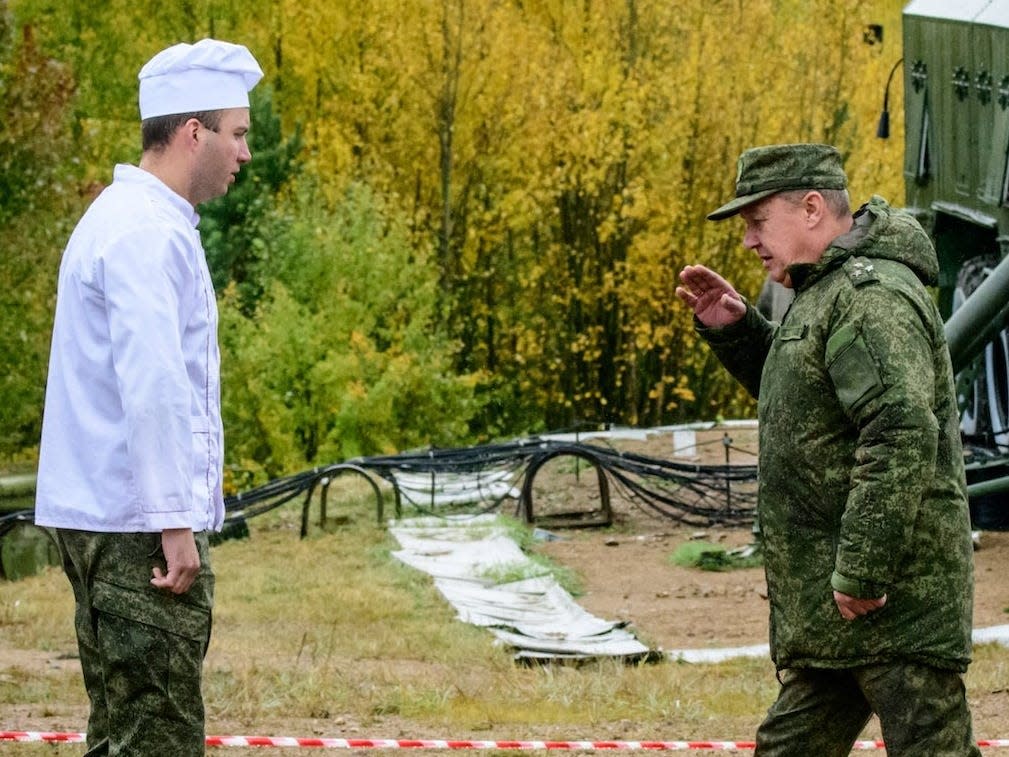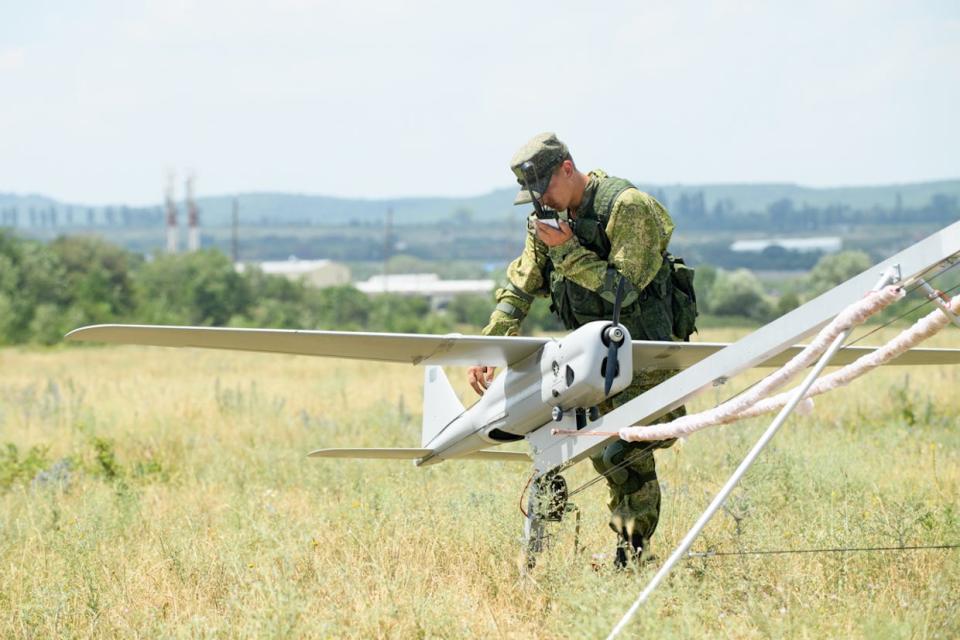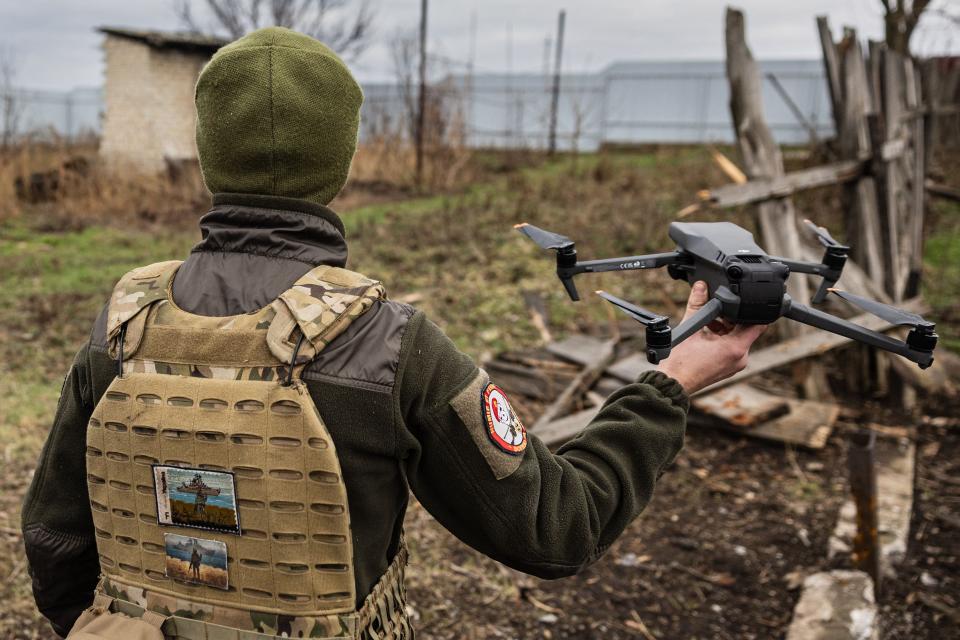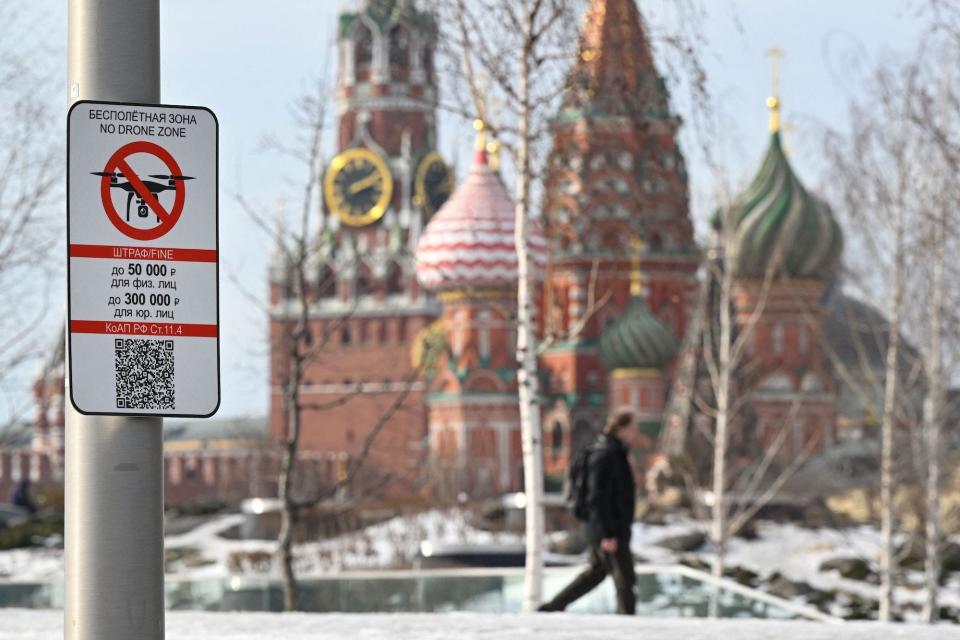Russia's military has been preparing for a drone-filled battlefield, and even its cooks are being trained to shoot them down

The spread of drones on the battlefield in Ukraine is one of the most notable features of the war.
Russia's military has been experimenting with drones in a variety of combat roles for years.
Counter-drone training has also become common throughout the Russian military.
Russia's attack on Ukraine last year kicked off Europe's biggest conflict since World War II, one in which two modern militaries have deployed new weaponry at an unprecedented scale.
As such, the fighting in Ukraine has introduced the world to new technologies that are upending longstanding military thinking. Perhaps the most notable development is the widespread use of drones.
Both sides have employed drones of all sizes and capabilities — both military- and commercially designed models — for a variety of operations. Many drones conduct aerial reconnaissance and provide vital information to troops on the ground or relay coordinates for artillery fire.
Other drones carry weapons, ranging from small grenade- and mortar-size munitions to harass infantry and mechanized forces to missiles and rockets for attacks on vehicles and fortifications, or are weapons themselves.
Almost every Ukrainian unit is using tactical drones in some way, but the Russian military has also been preparing for a drone-filled battlefield, and its troops — from the frontlines to rear areas — are being trained to use them and to shoot them down.
Countering enemy drones

Russian forces have been tinkering with drones — more formally called unmanned aerial systems or vehicles — for some time. They used them in Syria and employed them in Ukraine following Moscow's intervention there in 2015.
Gen. Valery Gerasimov, chief of the Russian military's general staff, said in 2017 that combat is now "unthinkable without drones — they are used by gunners, scouts, pilots — everyone."
Having used drones and seen drones used with increasing frequency, the Russian military has also expanded its counter-drone training. The threat is now considered so widespread that most Russian troops, regardless of military specialty, are getting instruction in spotting and dealing with drones.
"Counter-UAS training is now ubiquitous across the entire military. In fact, everyone in Russian military uniform — whether they're a soldier or a cook or a medic or whoever — has to know how to deal with small drones," Samuel Bendett, an expert on Russian military technology at CNA, a research organization, said during a February episode of the Modern War Institute's Urban Warfare Project Podcast.
Such training is now "a requirement," Bendett said. "So soldiers are trained how to shoot down small quadcopters, small UAVs that can potentially penetrate Russian defenses."

Troops shooting down aircraft is nothing new — British sailors reportedly brought down Argentine jets with small-arms fire during the Falklands War in 1982 — but counter-UAS training for Russian troops has frequently been part of broader electronic-warfare training.
"Every time we read about Russia's electronic-warfare training or a drill, we see the phrase 'counter-UAV training'" because defending against incoming drones and countering electronic-warfare countermeasures "are becoming one in the same," Bendett said.
Russian forces are also developing their own unmanned aerial and ground vehicles with robust countermeasures for electronic-warfare attacks, such as jamming, Bendett added.
Electronic warfare has been prevalent in Ukraine. Early in the war, Russian electronic-warfare capabilities frequently clashed with each other — which Western experts called "electronic fratricide" — but their performance has improved and they appear to have had an effect on Ukraine's weapons, including those provided by the West.
Recently leaked US Defense Department intelligence documents indicate that Russian troops have used GPS jamming to counter US-provided smart bombs known as Joint Direct Attack Munitions, causing them not to detonate or to miss their targets.
Attack vs. defense

The Russian military has used its unmanned aerial systems to give the Ukrainians a hard time by surveilling and attacking Ukrainian troops and with strikes on civilian targets, especially energy infrastructure.
In recent months, Russian forces have made prolific use of Iranian-made Shahed-136 loitering munitions to target Ukraine's critical infrastructure and urban centers.
Ukraine's military has been bolstering its drone defenses throughout the war, as shown in the Western military aid being sent to Kyiv. The US's latest package of security aid includes 30mm gun trucks designed to shoot down drones as well as mobile anti-drone laser-guided rocket systems.
Despite having kinetic and electronic-warfare countermeasures to take out Russian drones, Ukraine still faces a difficult challenge. Russia's drones, especially its Iranian-made loitering munitions, often used in large numbers and are cheaper than many of Ukraine's advanced air-defense weapons, like surface-to-air missiles.
The leaked US intelligence documents, which were composed in February, show that Ukraine's stocks of those missiles are dwindling. Western countries have supplied Kyiv with more missiles, but Russia's constant attacks mean Ukraine's military may increasingly face a difficult decision between trying to destroy drones or saving its ammo for Russian missiles and aircraft that can do more damage.
Stavros Atlamazoglou is a defense journalist specializing in special operations, a Hellenic Army veteran (national service with the 575th Marine Battalion and Army HQ), and a Johns Hopkins University graduate. He is working toward a master's degree in strategy and cybersecurity at Johns Hopkins' School of Advanced International Studies.
Read the original article on Business Insider

 Yahoo News
Yahoo News 
